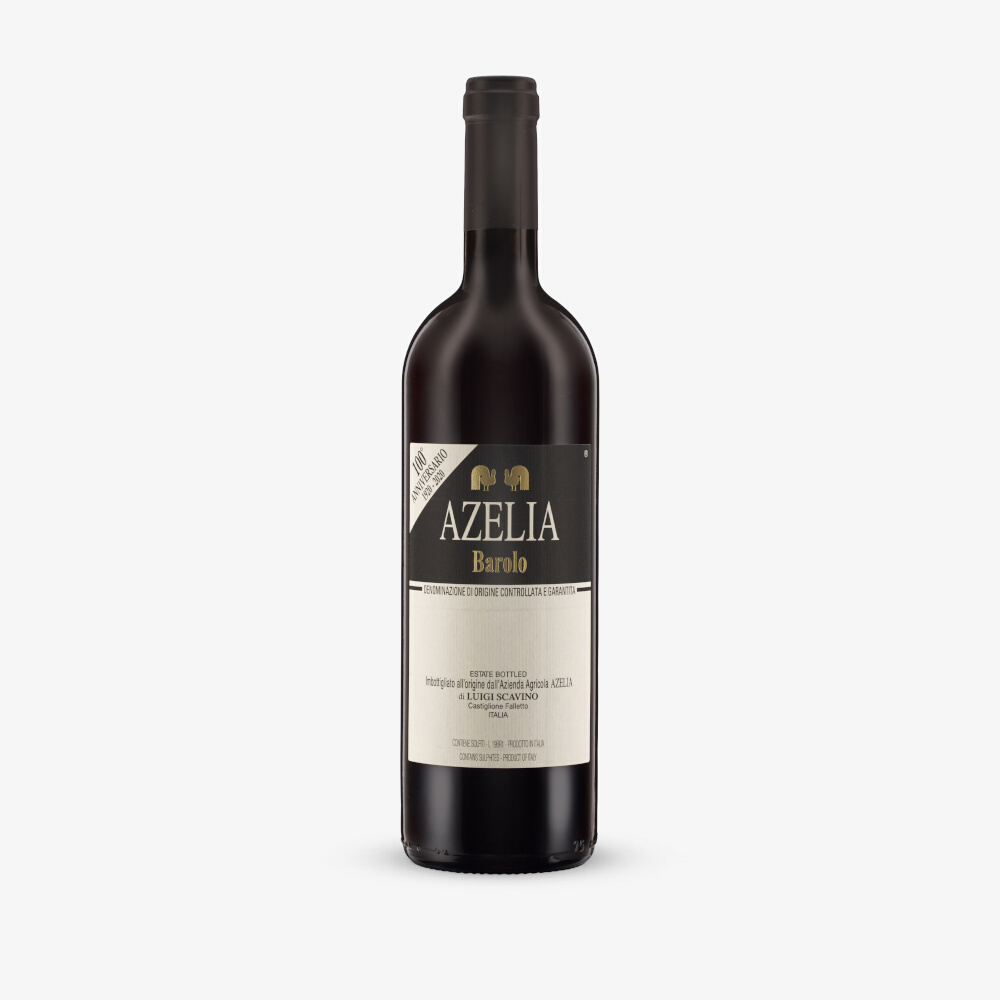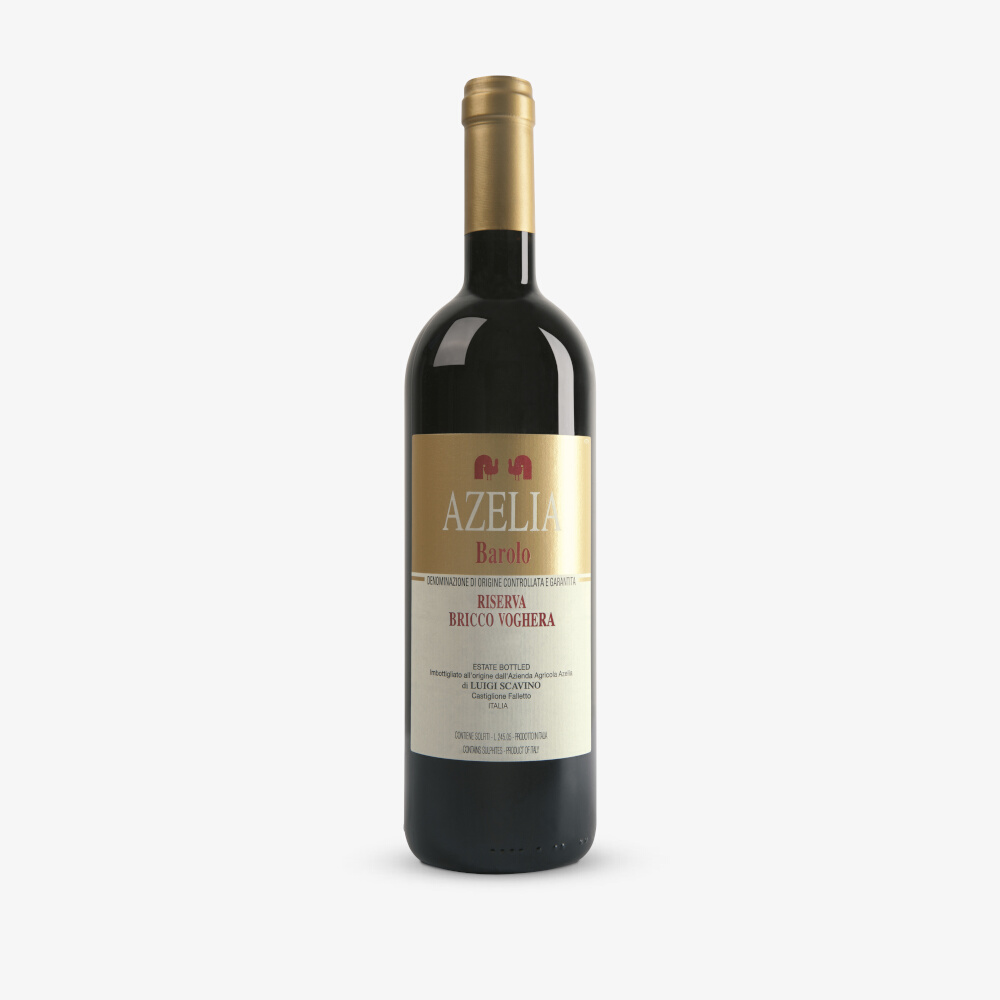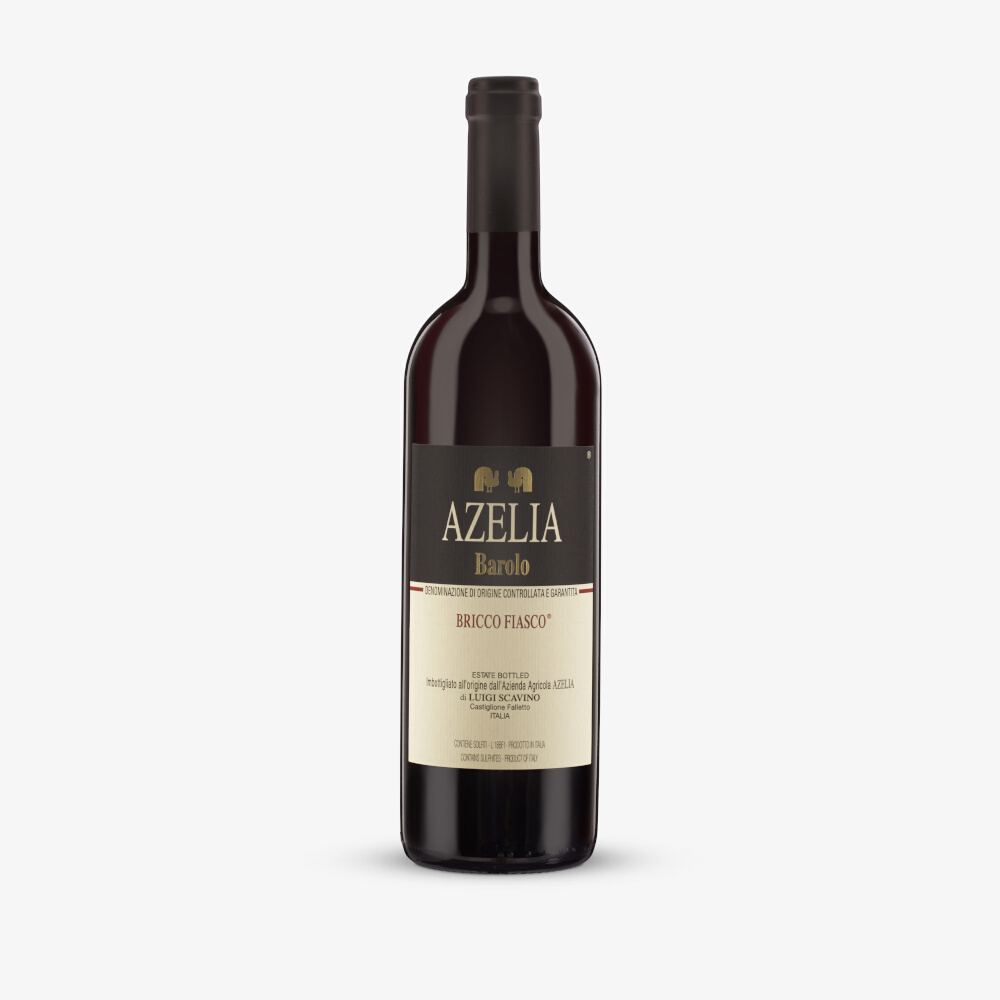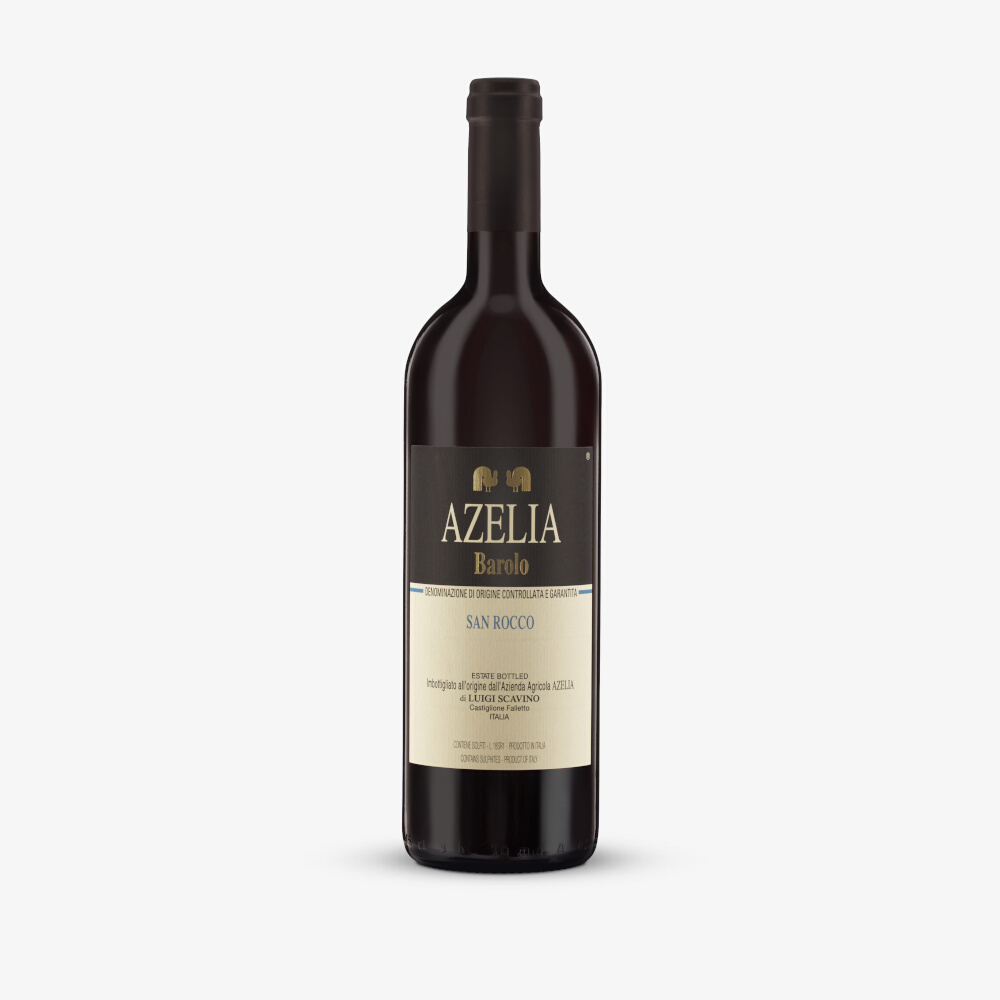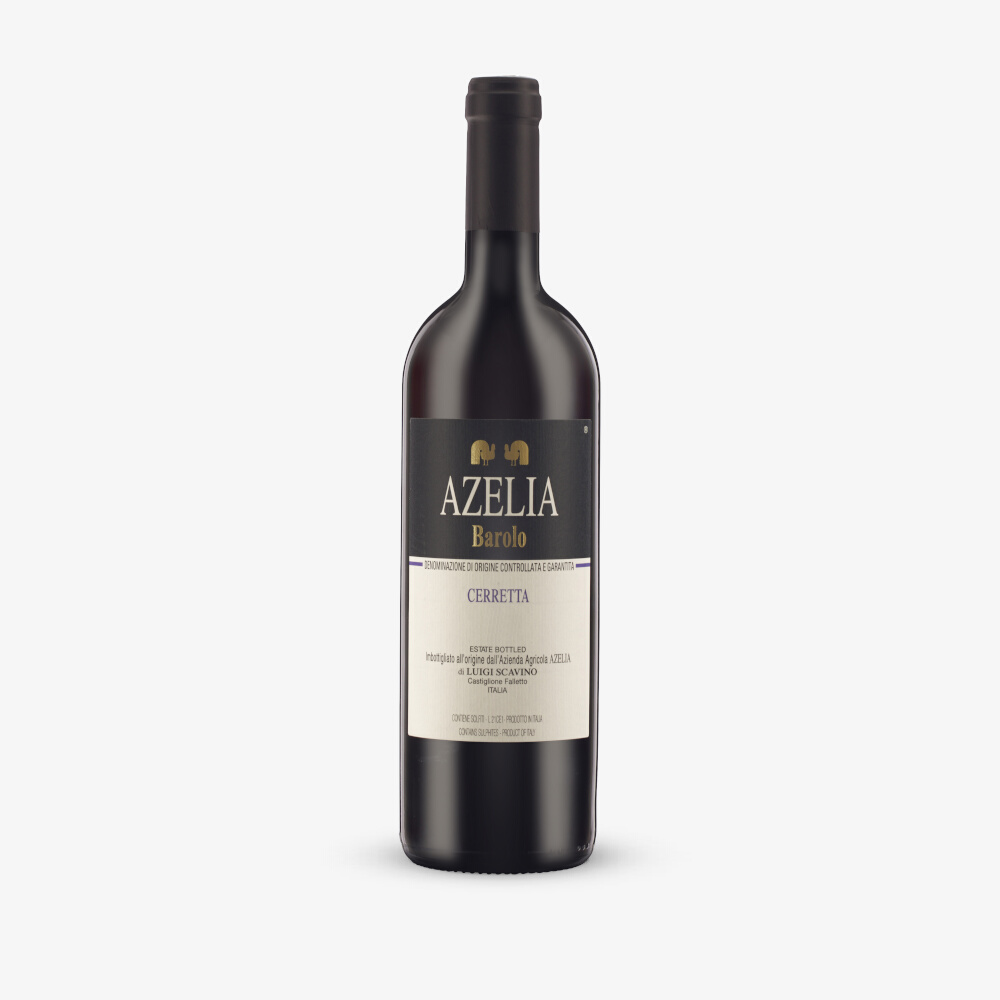
Azelia
Owner Luigi Scavino, cousin and neighbour of Piemonte legend Enrico Scavino, started off life as one of the typical modern Piedmont producers: no expense was spared as new oak was used for the top wines, yields were low and the sparkling new fermenting vats were of stainless steel. Change has been gradually taking place at Azelia over the past ten years, as son Lorenzo has been more and more involved in the family business. At first this meant a reduction in the amount of new oak on the top wines, then the move away from barriques entirely (they used a combination of formats in the run-up), whilst maintaining the same rigorous standards in the vineyards. Since 2016, all the Barolos are aged exclusively in traditional “Botti Grande” wooden casks for two years, with no new oak and blonde toasting. A sparkling new cellar was finished in time for the 2024 harvest, allowing to work even more efficiently in small batches. The single vineyards are all now fermented in cask with submerged cap, instead of stainless steel. They produce a superb Dolcetto planted at 500 metres above sea level on a south facing slope in the prime Montelupo district, and their oak-aged Barbera is extremely fine too. Their Nebbiolo holdings are spread out over the Castiglione Falletto and Serralunga regions where they produce full bodied, intense and complex wines. Their single vineyards are the ethereal but powerful Bricco Fiasco from Castiglione (the same vineyard as Scavino's Bric del Fiasc); the saline, herbal Margheria; and the explosive, spicy, darker-fruited San Rocco from Serralunga. Since 2016, they have also bottled a Cerretta – one of Serralunga’s most prestigious sites, as the vines hit twenty years of age. Luigi planted the vineyard himself. Before 2016, all the Cerretta fruit was blended into the Barolo Classico. In only the best of vintages a Barolo Riserva is made from the ideally situated Voghera.
2015 Vintage
“A Challenging year but in the end the ripening conditions proved great for Nebbiolo” reflected owner Luigi Scavino. 2015 has proved to be another excellent year at Azelia. Partially down to nature - good water reserves from a snowy winter, as well as lower temperatures and cooler nights from mid-August onwards, helped the vines avoid stress and continue ripening gradually. Additionally, Luigi and Lorenzo Scavino’s attentiveness in the vineyard was vital. They responded to the early summer conditions by managing the vines’ canopies carefully, controlling growth but ensuring clusters remained shaded and protected by the hot sun. The wines are so individual and different from one another but do offer a common warmth, charm, and ripeness - be it the floral red fruited Bricco Fiasco, the cleansingly mineral and elegant Margheria or the powerful, layered San Rocco.
2016 Vintage
Azelia are celebrating their Centenary year, and all of their Barolos 2016s will sport a special label honouring the fact. This landmark anniversary also hails the inaugural release of their Cerretta cru. The vines are now 30 years old. Up until now all of it has been blended into the Barolo “Classico,” but from 2016 onwards one large barrel will be kept aside and bottled separately when deemed good enough. Other changes here include the ageing regime for Bricco Fiasco and San Rocco both of which, from 2016 onwards, will be reared in large vats as well as barriques, half each. This continues Azelia’s aim over the last few years to minimise the impact of oak on the wine. The ageing for the Barolo, Margheria, Bricco Voghera stays the same – in large vats only. Otherwise little else has changed: Submerged cap fermentation for 55 to 60 days, followed by ageing for 24-30 months. Where small barrels are used for fermentation only 5-8% are new. Luigi Scavino thinks 2016 is even more classic than 2013. “Richness both on the nose and the mouth but at the same time it has an amazing drinkability which is striking because of the ripe tannins. I compare it to 1982. Freshness and high acidity combined with ripeness should mean great longevity. We finished harvest the last week of October so the tannins were fully ripe. 2016 has more freshness than 2006 and is less daunting than 2010. It is more elegant and finer than all of the other recent “classic” vintages.” This is an estate at the very top of their game, these are among the greatest wines of the vintage.
2017 Vintage
For Lorenzo and Luigi Scavino there were, above all, two key elements to success in 2017 - shading the bunches with the vine canopy to stop grapes burning, and harvesting earlier than usual (which meant starting mid to end of September, though picking in the later plots lasted into earlier October). The wines were fermented in the usual way, with 55-60 days maceration using the submerged cap method, to get a slow but very gentle form of extraction. Ageing depends on the wine, either exclusively in large unvarnished oak botti or in a mixture of botti and used oak barriques. Azelia are capable of such precision and quality of fruit in their wines, aligned to suave noble textures, all the more impressive that they have managed to achieve this in such a warm dry year as 2017 – a consistency which has justifiably elevated them into the pantheon of top Barolo producers. Stylistically these sit somewhere between 2015 and 2016 with more finesse and freshness than the former but more ripeness but less concentration than the latter.
2018 Vintage
Azelia continue an ever more traditional path with ageing in large oak botti for all of the wines, no longer just for the Barolo and Margheria; whilst fermentations were via the classic submerged cap method with skin contact lasting 45 days. Disease pressure in the early part of the season and uneven ripening meant that the crop was reduced by 30%. From July onwards warm, dry, weather kicked in until October. Harvest was relatively late, by recent standards, taking place over the last two weeks of October. The wines have grip, sinew and nerve and, in some cases will require patience and ageing in bottle.
2019 Vintage
Azelia is a good example of how former notions of “traditional” and “modern” Barolo are losing their relevance. Since 2016, ageing is in large oak botti (25 and 50hl) for all of the Barolo wines, not just the Classico and Margheria, whilst fermentations are via the classic submerged cap method in stainless steel, with skin contact lasting the full 50–60 days. The work in the vineyard is of even more importance though, as green harvests are carried out at least twice a year to reduce yields and ensure high levels of concentration and ripe tannin. In rigorously monitoring and looking after the health of the plants, Luigi Scavino is able to maintain a very high average vine age across their holdings, which they believe translates into the best wines possible, irrespective of the barrels used for ageing. Luigi was very enthusiastic about the 2019 vintage, saying that the wines remind him of the great vintages of yore. “The wines are bold but classic with good tannins and freshness and they reflect the character of the vineyards very well.” This year sees the release of the Riserva Bricco Voghera 2013 after ten years. A mighty wine, the oldest plot is over 100 years old and typically goes into the Barolo Classico. Raised in large cask for five years and further five years in bottle in only the best vintages, there is a nice synergy in this collection whereby the 2019s and 2013 make for happy stylistic bedfellows. The wines are bottled without any fining or filtration.
2020 Vintage
“We love the approachability of 2020. The wines have been aromatic and generous on the nose from the beginning and the structure is there. Without the power of 2019 or 2016, the tannins are better and more present than in 2018 and the acidity is higher than you’d think. This stands them very well for the future.” Lorenzo and Luigi Scavino liken 2020 to 2005 but with more precision. A warm March kicked the season off two weeks earlier than usual, but a cooler spring and early summer brought dates back in line. August was hot and dry but cool nights helped, leading in to a cooler than average September, thanks to snow in the Alps which lowered the temperatures in the Langhe by 7-8 degrees. At the end of the month, Luigi explained, producers arrived at a crossroads. Rain was forecast (and came to pass) in early October, prompting growers to decide whether to pick everything before the rain, or risk it and wait for the rains to pass in the hope of better phenolic ripeness. “Those who had the courage to wait were rewarded. The rains were not too bad and proved to be beneficial after the dry summer. My father opted to wait, so our Barolo harvest continued until October 13th, in line with a pretty (modern) classic year. If we think about 2015 or 2017, that relief and extended ripening means that the tannins are better. In some ways it recalls 2005 but now we have better sorting tables, stricter selections and more experience with variable seasons, so the 2020s are better versions – we adapt more quickly.” As has been the norm here for a while now, all the Baroli are fermented in bespoke designed stainless steel tanks and aged in large cask. The 2020s were bottled later than usual in October 2023.
2021 Vintage
A late evening visit in rapid fire Italian with Luigi and Lorenzo Scavino kept us very much awake at the end of a long day! They describe 2021 as a “a new classic: generous and aromatic in a way that you don’t expect in a classic year.” Like their neighbours Paolo Scavino, they consider 2021 to be the most complete and richest vintage in the context of 2016, 2019 and 2021, adding that “2021 has a lot of tannin but they are integrated and sweet and the wines are also brightly perfumed – we see similarities there with 2013 too.” Lorenzo spoke about how the autumn was perfect in 2021, enabling them to pick each cru at leisure, finishing on 18th October. Even better, the vineyard signatures are very clear, and the wines shine as a result. In the cellar, they fermented with submerged cap for 40 days in wooden cask, charting a move away from stainless steel for the single vineyards. Ageing for all the wines is carried out over two years in large old Slavonian oak casks, so there is very little wood influence in the wines.
Results: 10



